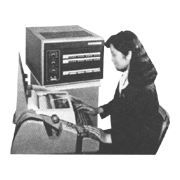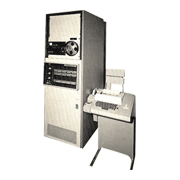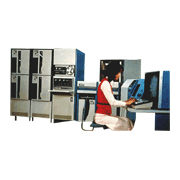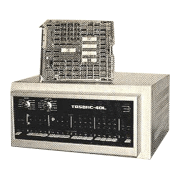This was Toshiba's first 16-bit minicomputer, announced in 1970.
It was developed by adopting technology from the Interdata Corporation (US), and featured: (1) 16 general registers, (2) direct addressing up to 64 kilobytes, and (3) a microprogram control system. These features were inherited by subsequent minicomputers from Toshiba.
The TOSBAC-40A was announced in September of 1970, but not long after, in December, Toshiba announced the TOSBAC-40B which expanded the instruction repertoire and added input/output channel capabilities based on microprogram enhancements. Enhancements were continuously made, with the TOSBAC-40C in 1973 and the 40D and 40L in 1975. The enhancement points in each case were as follows:
- (1)TOSBAC-40C
- -Employed MSI for logic
- -Clock 200nsec, main memory cycle time 800nsec or less
- (2)TOSBAC-40D
- -Realized 512 kilobyte main memory using segment registers
- -Employed IC memory modules with 32 kilobytes/board
- -Composite
A system for improving fault-tolerance and expandability, and a technology called cluster configuration. - -Added business arithmetic instructions such as decimal operations.
- -Coprocessor type optional processor for floating point arithmetic.
- (3)TOSBAC-40L
- -Single-board minicomputer
- -Realized CPU logic using 3 LSI families
ACU (CPU), BCU (peripheral bus control), DCU (bus interface)





